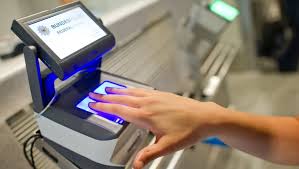
Breaking News
 Defending Against Strained Grids, Army To Power US Bases With Micro-Nuke Reactors
Defending Against Strained Grids, Army To Power US Bases With Micro-Nuke Reactors
 Pavel Durov: We're 'Running Out Of Time To Save The Free Internet'
Pavel Durov: We're 'Running Out Of Time To Save The Free Internet'
 Involving Children in Emergency Preparedness, by A.C.
Involving Children in Emergency Preparedness, by A.C.
 Catherine Austin Fitts Interview - Reverse Robin Hood: Why Has Trump Become Anti-Capitalist?
Catherine Austin Fitts Interview - Reverse Robin Hood: Why Has Trump Become Anti-Capitalist?
Top Tech News
 3D Printed Aluminum Alloy Sets Strength Record on Path to Lighter Aircraft Systems
3D Printed Aluminum Alloy Sets Strength Record on Path to Lighter Aircraft Systems
 Big Brother just got an upgrade.
Big Brother just got an upgrade.
SEMI-NEWS/SEMI-SATIRE: October 12, 2025 Edition
 Stem Cell Breakthrough for People with Parkinson's
Stem Cell Breakthrough for People with Parkinson's
 Linux Will Work For You. Time to Dump Windows 10. And Don't Bother with Windows 11
Linux Will Work For You. Time to Dump Windows 10. And Don't Bother with Windows 11
 XAI Using $18 Billion to Get 300,000 More Nvidia B200 Chips
XAI Using $18 Billion to Get 300,000 More Nvidia B200 Chips
 Immortal Monkeys? Not Quite, But Scientists Just Reversed Aging With 'Super' Stem Cells
Immortal Monkeys? Not Quite, But Scientists Just Reversed Aging With 'Super' Stem Cells
 ICE To Buy Tool That Tracks Locations Of Hundreds Of Millions Of Phones Every Day
ICE To Buy Tool That Tracks Locations Of Hundreds Of Millions Of Phones Every Day
 Yixiang 16kWh Battery For $1,920!? New Design!
Yixiang 16kWh Battery For $1,920!? New Design!
 Find a COMPATIBLE Linux Computer for $200+: Roadmap to Linux. Part 1
Find a COMPATIBLE Linux Computer for $200+: Roadmap to Linux. Part 1
American Travelers To Be Fingerprinted When Landing In 29 European Nations

The EU is cracking down on biometric security for its own citizens and it is now penalizing Americans to combat identity fraud, increase security, and combat terrorism. If you fly into these countries, you will be fingerprinted in addition to having to your face scanned. For business travelers, you will grin and bear it. For vacationers, you might think again if you want to be entangled in their criminal/terrorist surveillance system. ? Patrick Wood, Editor.
Americans heading to a raft of European destinations will have to comply with new border measures that are coming into force. And, it means travelers will be forced to have their fingerprints taken.
This is because the European Union's new Entry and Exit System has now come into effect on October 12. It affects travelers who are heading to 29 European countries for visits up to 90 days within a 180-day period.
The new system monitors when non-EU citizens enter and leave the Schengen area.
Travelers will scan their passports and have a photograph taken. Most will have their fingerprints taken, but this rule does not apply to children under 12.
The data is stored on a digital database. Travelers may have to answer basic questions about their journey.
Not all EU countries are members of the Schengen agreement, and some countries that are in the Schengen zone are outside the EU.
Traditional border controls do not exist within the Schengen Zone. For instance, the new system is not being rolled out at airports in Ireland. Norway and Liechtenstein, however, are part of the Schengen zone.
The countries participating in the program are:
• Austria
• Belgium
• Croatia
• Czechia
• Denmark
• Estonia
• Finland
• France
• Germany
• Greece
• Hungary
• Iceland (non-EU Schengen country)
• Italy
• Latvia
• Liechtenstein (non-EU Schengen country)
• Lithuania
• Luxembourg
• Malta
• Netherlands
• Norway (non-EU Schengen country)
• Poland
• Portugal
• Romania
• Slovakia
• Slovenia
• Spain
• Sweden
• Switzerland (non-EU Schengen country)



